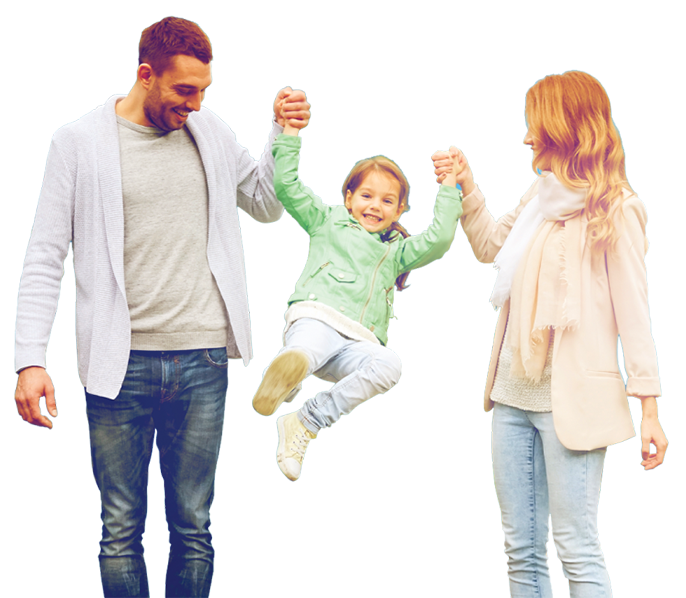Children diagnosed with Leg Length Discrepancy (LLD) often face unique challenges, particularly related to posture, walking, and physical activities.1,2 Even with these hurdles, children with LLD can still actively participate in school, sports, and social activities. However, depending on the severity of the LLD, certain adaptations may be necessary to ensure they stay safe and engaged. Mild LLD often sparks debate among clinicians about its impact, while larger discrepancies require more noticeable interventions.
In this article, we’ll explore strategies to help children with LLD, including open communication with educators and coaches, adaptive techniques for sports, and ways to support your child in maintaining a balanced lifestyle.
Challenges in School and Sports for Children with LLD
Leg length discrepancy can cause significant physical challenges, from altered gait to muscular imbalances and back pain.1 Mild LLD may be a risk factor for stress fractures in athletes as it is shown to have an impact on their biomechanics.3,4 Children may experience discomfort during physical activities, which could affect their participation in sports and daily routines. Ensuring that your child feels supported and included in school and sports activities is critical for their overall well-being.
Adaptive Strategies
LLD less than 1cm is often asymptomatic, and the majority of clinicians are of the opinion patients easily compensated for the LLD and it does not cause long-term consequence. But if a small LLD is noticed or bothers a child, then removable shoe inserts are an option. More importantly, the LLD needs to be monitored during their growing years. Although an insert may not alter the natural history of a LLD, it causes no harm and is typically tolerated well by children and adolescents.
For moderate to severe LLD cases, additional modifications might include using custom orthotic devices. Children may prefer sports that are less likely to exacerbate the discrepancy. Activities like swimming or cycling may be safer options, as they reduce impact on the legs while still allowing for cardiovascular exercise.8
Working with a physical therapist who specializes in LLD can also provide invaluable guidance. They can assess biomechanics, identify muscle imbalances, and recommend targeted exercises to strengthen weaker areas.6,7 Early intervention through regular physical therapy can prevent long-term complications such as joint pain or muscle strain. Despite facing limitations, children with LLD are encouraged to be active, exercise, and pursue activities that they desire regardless of performance.
Communication with Educators and Coaches
One of the most important steps in managing LLD is keeping open communication with your child’s teachers and sports coaches. Educators play a pivotal role in ensuring that your child’s physical needs are accommodated in the classroom and during physical education.
Informing educators and coaches about your child’s leg length discrepancy allows them to adjust their expectations and be mindful of any discomfort your child may experience.
Coaches can help modify activities to suit your child’s abilities and prevent injury, while also making it easier to identify potential problems. An attentive teacher may be the recipient of complaints that the child is reluctant to relay to the parents, and an observant coach may discern movement abnormalities before they can cause pain.9,10
Encouraging Participation in Sports and Social Activities
Children with LLD are just as eager to participate in social activities and sports as their peers. Encouraging them to stay active is essential for their physical and emotional health. Even with the physical challenges LLD may present, many children can continue engaging in sports they enjoy with proper support and accommodations.
For parents, the goal is to help your child maintain a balanced lifestyle – where they can thrive socially, academically, and physically. This might involve working closely with their school or community sports teams to ensure that the activities they choose are safe and enjoyable.
Conclusion: Supporting Your Child’s Success
Successfully managing leg length discrepancy in school and sports requires a collaborative approach, with parents, educators, coaches, and healthcare professionals working together. By fostering open communication and using adaptive strategies, your child can maintain an active, healthy lifestyle while managing their LLD.
References
- Parvizi J, Kim GK. Chapter 177 – Pediatric Leg-Length Discrepancy. In: Parvizi J, Kim GK, eds. High Yield Orthopaedics. W.B. Saunders; 2010:367-369.
- Hartley J. Chapter 13 – Orthopaedic conditions. In: Pountney T, ed. Physiotherapy for Children. Butterworth-Heinemann; 2007:199-218.
- Korontzi M, Kafetzakis I, Mandalidis D. Effects of Artificially Induced Leg Length Discrepancy on Treadmill-Based Walking and Running Symmetry in Healthy College Students: A Lab-Based Experimental Study. Sensors. 2023;23(24):9695.
- Kostopoulos M, Malliaropoulos N, Papalada A. Leg length discrepancies in elite track and field athletes with stress fractures. British Journal of Sports Medicine. 2011;45(2):e1. doi:10.1136/bjsm.2010.081554.55
- Applebaum A, Nessim A, Cho W. Overview and Spinal Implications of Leg Length Discrepancy: Narrative Review. Clin Orthop Surg. Jun 2021;13(2):127-134. doi:10.4055/cios20224
- Ennis E. Chapter 25 – Pediatric Orthopaedic Physical Therapy. In: Placzek JD, Boyce DA, eds. Orthopaedic Physical Therapy Secrets (Third Edition). Elsevier; 2017:220-230.
- Lin YF, Lin DH, Jan MH, Lin CHJ, Cheng CK. 10.20 – Orthopedic Physical Therapy. In: Brahme A, ed. Comprehensive Biomedical Physics. Elsevier; 2014:379-400.
- Tinney MJ, Caldwell ME, Lamberg EM. Adaptive Sports and Recreation in Persons with Limb Loss/Limb Deficiency. Physical Medicine and Rehabilitation Clinics of North America. 2024/07/16/ 2024;doi:https://doi.org/10.1016/j.pmr.2024.06.004
- Nemeth BA. Supporting Patients in the Pursuit of Adaptive Sports. Journal of the Pediatric Orthopaedic Society of North America. 2022/08/01/ 2022;4(3):538. doi:https://doi.org/10.55275/JPOSNA-2022-0073
- McMullen CW, Latzka EW, Laker SR, De Luigi AJ, Harrast MA. 39 – Sports Medicine and Adaptive Sports. In: Cifu DX, ed. Braddom’s Physical Medicine and Rehabilitation (Sixth Edition). Elsevier; 2021:789-819.e7.
 Share on facebook
Share on facebook
 Share on twitter
Share on twitter
 Share on linkedin
Share on linkedin
 Share on email
Share on email

